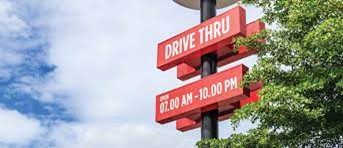Food Insecurity v. Food Access: what’s the difference?
It’s easy to confuse the two or think they mean the same thing, but they’re different and there are different resources to help with both.

March is national nutrition month- so we wanted to highlight food insecurity and healthy food access this month. Food insecurity can lead to hunger and malnourishment and and is divided into 2 categories: low food security (reduced quality, variety, or desirability of diet but little or no indication of reduced food intake) and very low food security (multiple indications of disrupted eating patterns and reduced food intake). Healthy food access refers to the stable availability of nourishing, affordable, and suitable foods. Physical and economic accessibility are important elements, along with production systems that prioritize the wellbeing of food producers and consumers. The USDA says “Food access is about more than just whether there are grocery stores in a community. It also has to do with whether households can afford to purchase healthy food.” Both food insecurity and healthy food access can be related to poverty, employment, and job quality, but there are often multiple other contributing factors, such as systemic racism, low investment in certain neighborhoods, poor transportation infrastructure (which includes everything from public transit to sidewalks), and public safety. Both food insecurity and lack of healthy food access can contribute to obesity; even though that may sound as if the opposite should be true. If a person can’t get enough food, it seems as if that person shouldn’t be at risk of gaining weight. But in fact that’s often what happens, as poor food quality or limited food quantity can lead to consistently consuming unhealthy, processed food.
In areas deemed “food deserts ” – areas where people lack access to affordable and nutritious food -food may be accessible nearby, but instead of a grocery store or farmers market, the accessible food is sold in small stores such as convenience stores or gas stations. Places like this may charge more for the food items than a traditional grocery store and they often do not have many “healthy” foods such as fresh fruit or vegetables. As a result, many people must rely on fast food and processed, non-perishable options that, in return, are worse for our health. For example, think about Cheetos: 3.25 oz bag contains 595 calories and costs around $2.50 while a single apple is only about $0.85 but only has 95 calories in it. This means you would have to have at least 6 large apples for the same caloric value, which would be about double the cost of the Cheetos. The chip bag provides more calories for less money without any of the nutritional benefits.

Not all convenience stores are bad options for people living in food deserts. Jump IN has worked closely with partners on the far eastside of Indianapolis to create “healthy corner stores.” You can read all about that project here. In some neighborhoods fresh fruits and vegetables may be available but residents may not know how to access them or may perceive another obstacle, such as a culture barrier, in the way. An example are mercados (Spanish and Portuguese for markets) that can sometimes be found in food deserts and often offer fresh fruits and vegetables. Non-Latino residents may not take advantage of this shopping option because they may not think it is there to serve them, even if it offers healthy, affordable food.
There is a large amount number of people who do not realize they can qualify for assistance programs such as SNAP or WIC. SNAP and WIC are federally-funded safety net programs: SNAP = Supplemental Nutrition Assistance Program (also commonly known as food stamps) and WIC = Women, Infants, and Children. Both assist low-income families and their children in purchasing healthy foods through an Electronic Benefit Transfer (EBT) card or a WIC check. To find out if you are eligible for food assistance, click here.

In Indianapolis, the Indy Hunger Network has created a tool called the community compass where you can find food – both hot meals and pantry items. Community Compass is an app for your smart phone and is downloadable for free on the app store. It also can direct to additional support services.
Both food insecurity and a lack of healthy food access contribute to poor health and suffering. Over the last several years, Jump IN has been working to develop and implement a food infrastructure in Indianapolis to improve healthy food access and reduce food insecurity. In 2021 we helped lead the effort to pass a city ordinance establishing just that. You can read about it here. Keep an eye out for news from the Food Access Commission and its work to help Indianapolis residents gain affordable, consistent access to nutritious food for better health and a better city.
Topics: Community Engagement, Food Access, Healthy Eating
Subscribe for more
Want more ideas for healthy schools, workplaces, child care providers, and families? Subscribe to our blog for weekly tips delivered right to your inbox!
Hearts Day, Heart Month NEXT »
Live Laugh Dance
